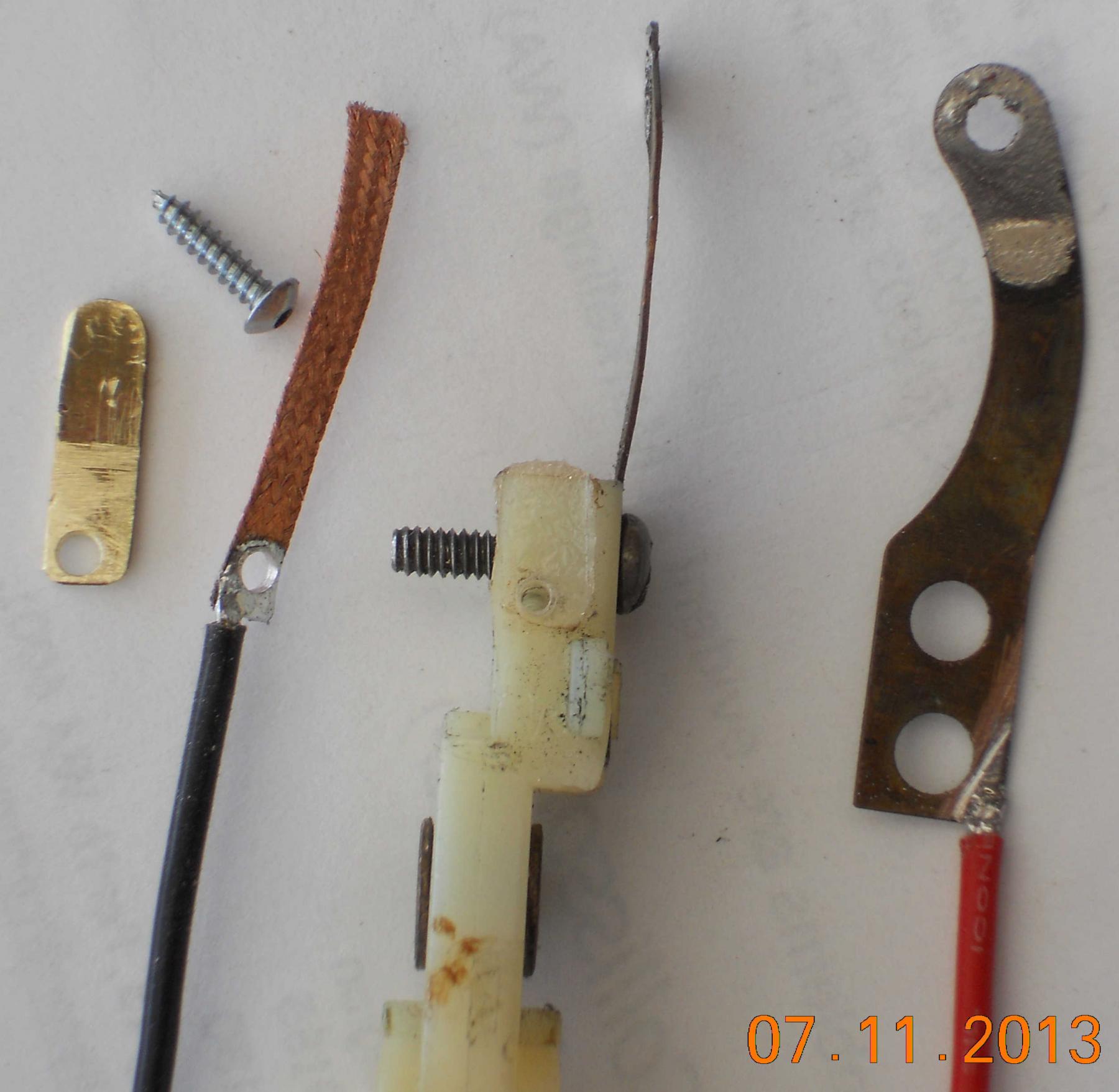My DiFalco has ESP -- Extreme Stopping Power. When this switch is engaged, power from the wiper at the brake end of its travel (not from the brake contact!) goes through a diode to a relay coil. The relay energizes and connects the red and black leads together right at the power block, cutting the brake pot and all its associated wiring (including the wiring from power block to controller handle and back) out of the circuit.
I love how this thing works. I'm not as thrilled with the brake operation with the ESP turned off, utilizing the conventional brake contact and pot. I was getting inconsistent braking action which I eventually traced to the brake contact itself, in this case a flat brass surface on the trigger contacting a copper bump. Both brass and copper get corroded and the ohmage of that contact varies -- which means the braking action varies. A formula for coming off in the turns.
I replaced the copper bump with an actual contact robbed out of an electrical switch. My braking action immediately got considerably more consistent. I was also thinking about soldering a piece of thin stainless over the flat brass piece but never got around to it.
I should also point out that I've blown the brake pot on this controller about four times. Sometimes my stupidity in connecting it up wrong, sometimes something else going on. Once was a blown diode.
To the point of this thread: I decided that if the ESP works so well for max brake operation, why not something similar for all brake operation? I purchased another tiny relay sorta like the one used for the ESP, but I installed this one in the controller handle rather than in the power block. I connected it to the off position of the ESP switch, so "on" operates the ESP relay while "off" operates this new relay in exactly the same manner. I added a diode in the circuit just as the ESP circuit has, presumably to prevent the relay from energizing if the controller is hooked up wrong. This relay works exactly the same way the ESP relay does except that it utilizes the brake pot. I disconnected the brake contact on the trigger, so that contact remains the physical stop for trigger motion but has no electrical function.
I am thrilled with how well this works! Suddenly I'm a better driver, being able to dive deep into corners lap after lap without coming out.
One thing worth noting: When there's a track call and power is cut to the track, you have NO BRAKES. If the track call happens just as you're diving into a corner, the car WILL be coming out! Fortunately, there's a track call going on, so some corner marshal just has to put your car back on before the race resumes.
I expect this relay will also help prevent the brake pot from getting blown, as the relay won't energize to connect it if the power is hooked up incorrectly. There might still be some way to blow that pot, but I believe it's far less likely.
For those without an ESP switch: I believe you could make a similar mod by controlling a relay with the regular brake contact. Variability in the contact's ohmage would make no difference, as it simply turns the relay on and off. The relay contacts will provide consistent braking action.
Comments?
























